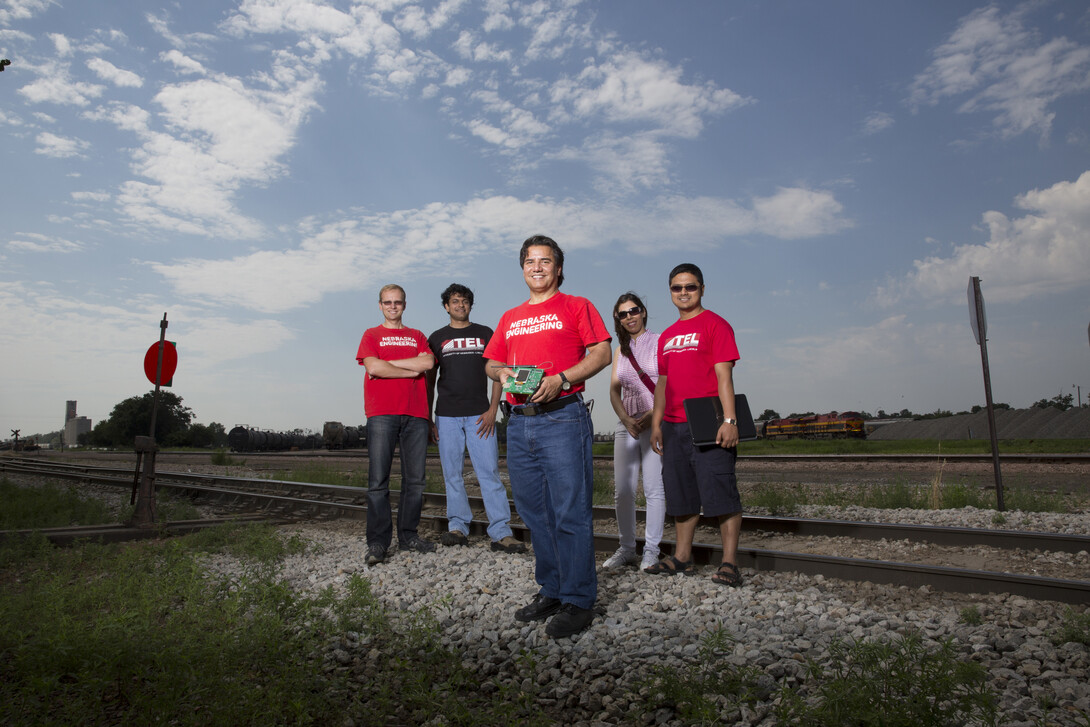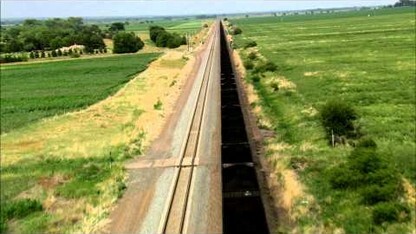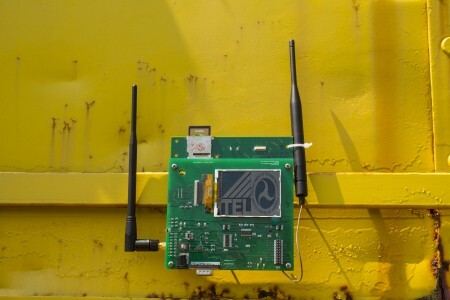
Once a freight train leaves the station to rumble across the countryside, it’s difficult to monitor the condition of railcars and their cargo. Potentially hazardous situations can develop undetected.
To improve safety in rail freight transportation, UNL computer and electronics engineer Hamid Sharif and his team are developing a wireless sensor network to provide real-time railcar monitoring that alerts the engineer to potential problems.
“The locomotive engineer needs to be aware of each railcar’s status all the time, or an undetected problem could cause major problems, such as derailment, major leak or other issues,” said Sharif, the Charles J. Vranek Distinguished Professor based at Omaha’s Peter Kiewit Institute. “Currently, real-time monitoring isn’t available for freight railroads. The engineer doesn’t know if something happens in a car while the train is moving.”
The research was highlighted in the 2013 UNL Research Report, released this month by the UNL Office of Research and Economic Development.
Wireless sensor networks use sensors to gather data. Information is sent hopping wirelessly across a web of these devices to a central location where it’s collected and analyzed. Wireless networks can keep an eye on situations impossible to monitor otherwise, such as a moving train.
Sharif’s network will use sensors to detect current conditions in each railcar, such as temperature, track status or wheel imbalances, and the presence of chemicals or radiation. This information will be sent wirelessly to the locomotive engineer, and even ahead to the next station or to headquarters.
Such real-time data can help prevent spoilage if refrigeration fails, monitor livestock conditions, detect intrusions or tampering, and identify malfunctioning parts to help prevent breakdowns or derailments.
Sharif’s team designed a system to use standard technology, so trains from different companies or countries can communicate, improving convenience and safety. His system is now being field-tested at the Transportation Technology Center Inc., near Pueblo, Colo.
Sharif expects the new wireless sensor network to be available by 2015. A $750,000 grant from the U.S. Department of Transportation funds this work. Omaha-based Union Pacific Railroad also supports this research.









